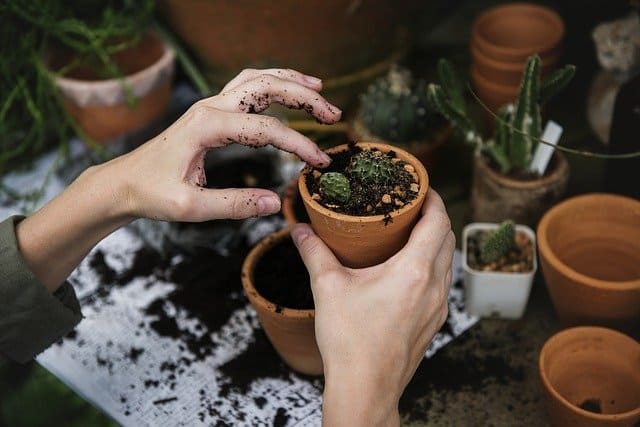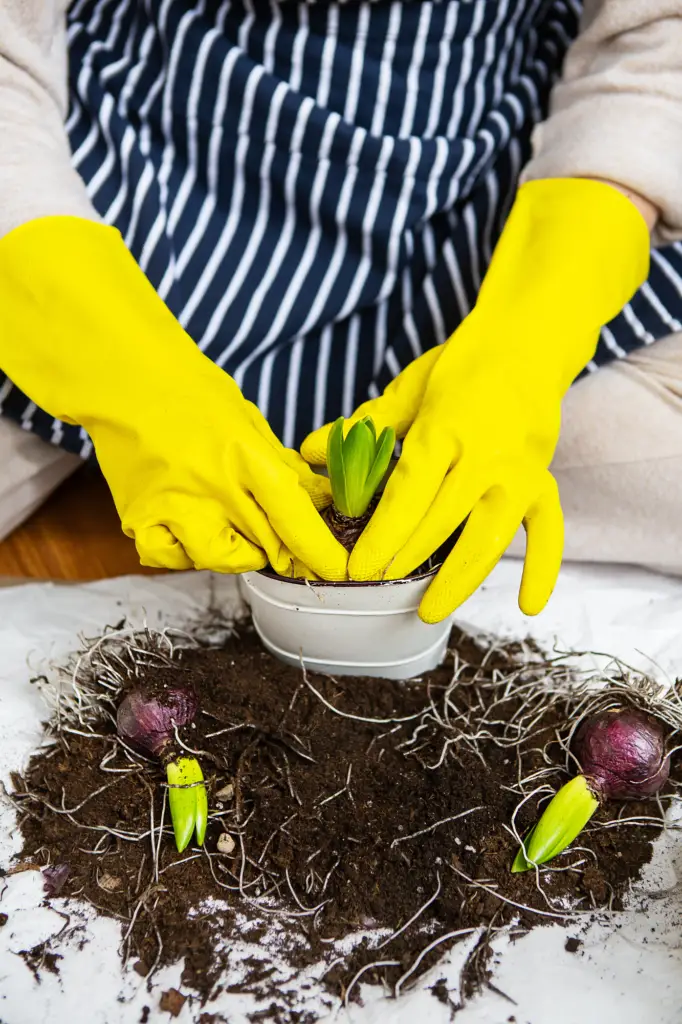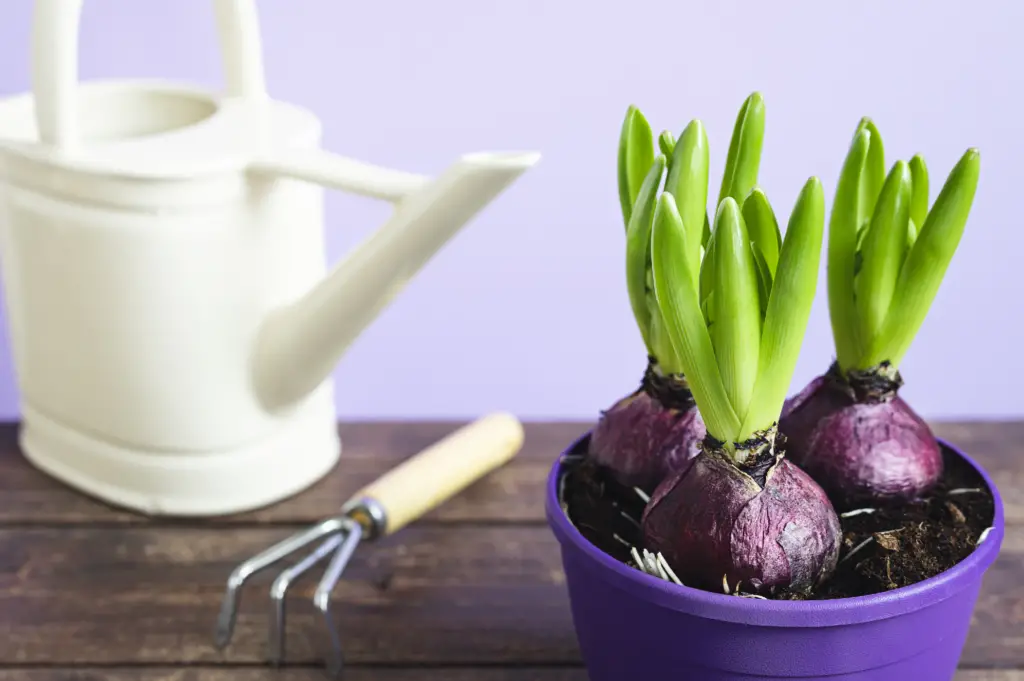Grape hyacinths, scientifically known as Muscari, are charming and petite flowering bulbs that add a splash of colour and a sweet fragrance to any indoor space. These dainty flowers, resembling tiny clusters of grapes, are relatively easy to care for and can thrive indoors when provided with the right conditions. Whether you’re a seasoned plant enthusiast or a beginner looking to introduce some greenery into your home, caring for a grape hyacinth can be a rewarding experience. In this comprehensive guide, we will explore the steps to ensure your grape hyacinth thrives and blossoms with grace indoors.
Table of Contents
Understanding the Grape Hyacinth
Before delving into the care instructions, it’s crucial to familiarise yourself with the grape hyacinths’ basic characteristics and growth requirements. Grape hyacinths are perennial bulbous plants belonging to the Asparagaceae family. They are native to the Mediterranean region and can be found in various colours, including shades of blue, purple, and white.
In their natural habitat, grape hyacinths typically bloom in the spring and go dormant during the summer months. However, when grown indoors, you can manipulate their environment to enjoy their blooms at any time of the year. These plants usually reach a height of about 6 to 8 inches (15 t0 20 centimetres) and feature thin, strappy leaves that add to their overall elegance.
Selecting the Right Container
Choosing the appropriate container is the first step in caring for a grape hyacinth indoors. Select a pot that provides sufficient space for the bulb to grow and develop. A container with drainage holes is essential to prevent waterlogged soil, which can lead to root rot.
A shallow pot works best for grape hyacinths since they have relatively small root systems. You can opt for a terracotta pot, which not only provides adequate drainage but also adds a rustic touch to your indoor garden. Ensure the container is at least 4 to 6 inches (10 to 15 centimetres) deep to accommodate the bulb’s roots comfortably.
Soil Preparation
Grape hyacinths thrive in well-draining soil that is rich in organic matter. A good potting mix for these bulbs can be prepared by combining equal parts of regular potting soil, peat moss, and perlite or coarse sand. This mixture ensures proper aeration, which prevents the risk of root rot and waterlogging.
Before planting the grape hyacinth bulb, fill the pot with the prepared potting mix, leaving enough space at the top for watering. Gently pat down the soil to eliminate any air pockets and create a stable foundation for the bulb.
Planting the Grape Hyacinth Bulbs
Planting grape hyacinth bulbs is an exciting and straightforward process. The bulbs can be planted individually or grouped together for a more striking display. Follow these steps to ensure successful planting:
- Positioning the Bulbs: Place the grape hyacinth bulbs on the soil surface with the pointed ends facing upward. Space the bulbs about an inch apart to allow room for growth and prevent overcrowding.
- Covering the Bulbs: Once the bulbs are in place, cover them with the remaining potting mix, ensuring that the top halves of the bulbs remain exposed. This allows the shoots to emerge freely while securing the roots in the soil.
- Watering After Planting: After planting the bulbs, give them a thorough watering to settle the soil and initiate the growth process. Avoid overwatering at this stage, as excessive moisture can cause the bulbs to rot.
Providing Optimal Light Conditions
Proper lighting is crucial for the healthy growth and flowering of grape hyacinths indoors. These plants prefer bright, indirect light, making a sunny windowsill an ideal location. If you don’t have a window with indirect light, you can use artificial grow lights to provide the necessary illumination. Place the grow lights 6 to 12 inches (15 to 30 centimetres) above the plants, and keep them on for about 12 to 14 hours per day.
Avoid placing grape hyacinths in direct sunlight for extended periods, as this can lead to leaf scorching and heat stress. Monitor the light levels, and adjust the position of the plants accordingly to prevent any adverse effects.
Temperature and Humidity Considerations
Grape hyacinths thrive in cool temperatures similar to their natural Mediterranean climate. Aim to keep the indoor temperature between 50°F to 70°F (10°C to 21°C) during the day and slightly cooler at night. Avoid exposing the plants to extreme temperature fluctuations, as this can hinder their growth and flowering.
The ideal humidity level for grape hyacinths is around 40% to 50%. If the air in your home is particularly dry, you can increase humidity levels by using a humidifier or placing a shallow tray filled with water and pebbles near the plants. As the water evaporates, it will create a more humid microenvironment for your grape hyacinths.
Watering Routine
Proper watering is vital for the health of your grape hyacinths. Allow the top inch or centimeters of the soil to dry out slightly before watering again. Stick your finger into the soil to gauge its moisture level. If it feels dry at the top, water the plant until you see water draining from the bottom of the pot.
During the active growing season, typically in the spring and early summer, the plant requires more frequent watering. As the plant enters its dormant phase during the fall and winter months, reduce watering and let the soil dry out more thoroughly between watering sessions.
Fertilisation
Feeding your grape hyacinth with the right nutrients can enhance its growth and blooming potential. Use a balanced liquid fertiliser diluted to half the recommended strength, and apply it once every two weeks during the active growing season.
As the plant begins to bloom, switch to a high-phosphorus fertiliser to support flower development. Follow the instructions on the fertiliser label and avoid overfertilisation, as excessive nutrients can damage the plant’s roots and lead to various issues.
Maintaining the Plant
Grape hyacinths are relatively low-maintenance plants, but they still benefit from regular care to ensure their health and beauty. Here are some essential tasks to keep your grape hyacinth in prime condition:
- Deadheading: After the flowers fade and wither, snip off the flower stalks to encourage the plant to put more energy into bulb development rather than seed production.
- Pruning: Trim yellow or brown leaves close to the base to maintain the plant’s aesthetics and prevent the risk of disease spread.
- Pest Control: Grape hyacinths are relatively pest-resistant, but you should still inspect the plant regularly for any signs of pests or diseases. If you notice any issues, address them promptly using appropriate measures, such as insecticidal soap or neem oil.
- Rejuvenation: Grape hyacinth bulbs may lose their vigour over time. To rejuvenate the plant, you can lift the bulbs from the soil after the flowering period and store them in a cool, dry place until the next planting season.
Handling Dormancy
As mentioned earlier, grape hyacinths go through a dormant phase during the late summer and autumn. During this time, the plant’s growth slows down, and the leaves may yellow and wither. Reduce watering gradually as the plant enters dormancy, allowing the soil to dry out more between waterings.
To promote healthy dormancy, move the pot to a cool and dark location, such as a basement or garage, where the temperature remains between 40°F to 50°F (4°C to 10°C). Keep the bulbs in this environment for about 10 to 12 weeks. After this period, you can gradually reintroduce the plant to light and warmth to encourage new growth and flowering.
Conclusion
Caring for a grape hyacinth indoors offers a delightful opportunity to nurture a touch of springtime beauty year-round. With proper attention to their light, water, temperature, and nutrient needs, these petite bulbs can reward you with charming clusters of blossoms and a sweet fragrance that will brighten up any indoor space. Whether you’re an experienced gardener or just starting your plant journey, the journey of caring for a grape hyacinth is a rewarding and satisfying one.




